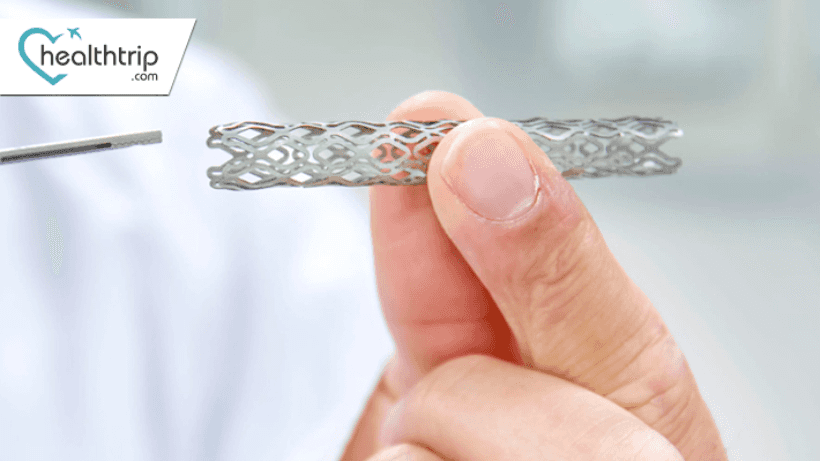
The Role of Stents in PTCA Procedures
15 Nov, 2023
 Healthtrip Team
Healthtrip TeamPercutaneous Transluminal Coronary Angioplasty (PTCA) represents a cornerstone in modern interventional cardiology, offering a lifeline to millions suffering from coronary artery disease (CAD). The integration of stents into PTCA procedures has been nothing short of revolutionary, enhancing both the efficacy and safety of angioplasty. In this comprehensive exploration, we delve into the sophisticated world of stents, examining their evolution, functionality, and the cutting-edge advancements shaping the future of cardiac interventions.
Most popular procedures in India
PTCA, a minimally invasive procedure designed to alleviate blockages in coronary arteries, has evolved significantly since its inception. Initially, the procedure faced challenges, particularly the risk of restenosis (re-narrowing of the artery post-procedure). The introduction of stents mitigated this risk, marking a paradigm shift in interventional cardiology.
Wellness Treatments
Give yourself the time to relax
Lowest Prices Guaranteed!

Lowest Prices Guaranteed!
Understanding Stents
Stents are mesh-like tubes of thin wire, serving as a scaffold to maintain arterial patency post-angioplasty. Their deployment at the site of blockage has substantially reduced the incidence of restenosis, thereby improving patient outcomes.
Types of Stents and Their Implications
- Bare-Metal Stents (BMS): The first generation of stents, while effective, posed a risk of in-stent restenosis due to scar tissue formation.
- Drug-Eluting Stents (DES): Representing a significant advancement, DES are coated with medication that inhibits scar tissue growth, thereby reducing restenosis rates. According to a study published in the Journal of the American College of Cardiology, DES have significantly lowered the need for repeat revascularization compared to BMS.
- Bioresorbable Stents: The latest in stent technology, these stents dissolve over time, potentially reducing long-term complications associated with permanent stents. Research in Circulation highlights their potential in improving long-term vascular health.
The Clinical Benefits of Stents in PTCA
The integration of stents into PTCA has been a game-changer:
- Reduced Restenosis: The primary benefit, especially with DES, is the marked reduction in the likelihood of artery re-narrowing.
- Decreased Repeat Interventions: This has significant implications for healthcare systems, reducing the burden of repeat procedures.
- Enhanced Patient Outcomes: Improved success rates of PTCA with stents translate to better quality of life and reduced mortality rates from CAD.
- Expedited Recovery: Compared to coronary artery bypass grafting (CABG), stent placement involves less recovery time and lower complication rates.
Navigating the Risks
Despite their benefits, stents are not devoid of risks:
- Thrombosis: Particularly with first-generation DES, there is a risk of stent thrombosis, necessitating long-term antiplatelet therapy.
- Late In-Stent Restenosis: Although reduced, there is still a risk of restenosis, particularly in complex cases.
- Material Sensitivity: Rarely, patients may exhibit allergic reactions to stent materials or drugs used in DES.
Post-Procedure Care and Lifestyle Integration
Post-stenting, adherence to dual antiplatelet therapy (DAPT) is crucial to prevent thrombotic complications. Lifestyle modifications, including dietary changes, exercise, and smoking cessation, are pivotal in conjunction with medical therapy.
The Future of Stenting: A Glimpse into Tomorrow
The horizon of stent technology is ever-expanding. Current research is focused on enhancing the biocompatibility of stents, refining drug coatings, and exploring fully bioresorbable stents. A study in The Lancet outlines the potential of next-generation DES in reducing complications associated with permanent implants.
Stents have indubitably transformed PTCA, turning a once high-risk procedure into a routine intervention with excellent outcomes. As we advance, the focus remains on personalizing stent therapy, optimizing long-term outcomes, and integrating these advancements into holistic patient care. For healthcare professionals and patients alike, understanding the nuances of stent technology is pivotal in navigating the complex landscape of CAD management.
Related Blogs

Top Cardiologists in India for a Healthy Heartbeat
Get a healthy heartbeat with the top cardiologists in India

The Rise of Apollo Hospitals as a Premier Destination for Cardiac Treatment
Discover why Apollo Hospitals is the preferred choice for cardiac

Pacemaker Implantation in the Elderly: What to Expect
Learn about the unique considerations and benefits of pacemaker implantation

Pacemaker Implant and MRI: What You Need to Know
Understand the safety guidelines for MRI scans with a pacemaker

The Future of Pacemaker Technology: Advances and Innovations
Explore the latest advancements in pacemaker technology and how they're

Pacemaker Implant and Travel: What to Consider
Get informed about traveling with a pacemaker implant, including airport










